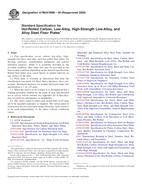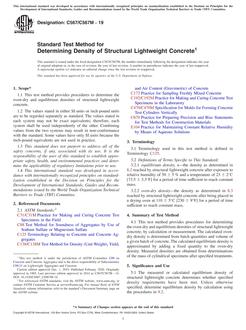1.1 These practices cover procedures for determining the liquidus temperature (Note 0) of a glass (NOTE 0) by establishing the boundary temperature for the first crystalline compound, when the glass specimen is held at a specified temperature gradient over its entire length for a period of time necessary to obtain thermal equilibrium between the crystalline and glassy phases. Note 0These terms are defined in Definitions C 162.
1.2 Two methods are included, differing in the type of sample, apparatus, procedure for positioning the sample, and measurement of temperature gradient in the furnace. Both methods have comparable precision. Method B is preferred for very fluid glasses because it minimizes thermal and mechanical mixing effects.
1.2.1 Method Aemploys a trough-type platinum container (tray) in which finely screened glass particles are fused into a thin lath configuration defined by the trough.
1.2.2 Method Bemploys a perforated platinum tray on which larger screened particles are positioned one per hole on the plate and are therefore melted separately from each other.
This standard does not purport to address all of the safety concerns, if any, associated with its use. It is the responsibility of the user of this standard to establish appropriate safety and health practices and determine the applicability of regulatory limitations prior to use.
Product Details
- Published:
- 09/01/2005
- Number of Pages:
- 9
- File Size:
- 1 file , 230 KB


